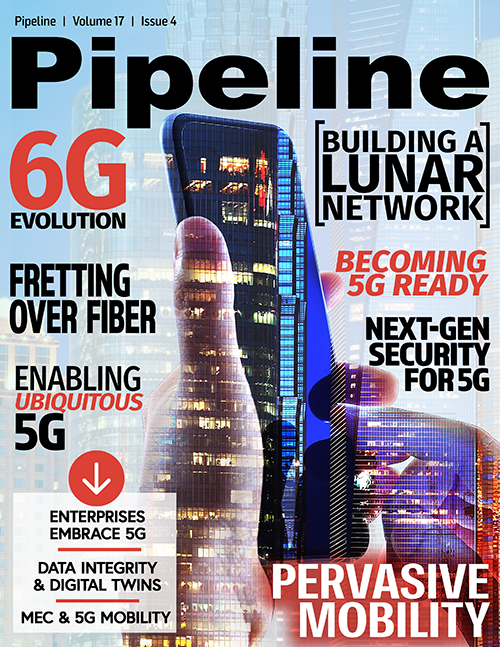Ubiquitous 5G from the Inside Out
By: Luigi Tarlazzi

The telecommunications industry is working to build a future in which mobile connectivity is truly ubiquitous and accessible for all. To achieve this vision, mobile operators across the United
States are rolling out 5G networks to support more bandwidth and enable faster download speeds that will eventually provide up to 10 gigabits per second (Gbps) and gigabit/s upload speeds.
Concurrently, smartphone manufacturers like Apple and Samsung are marketing their respective devices, such as the iPhone 12 and Galaxy S20, with 5G capabilities to take advantage of the new
mobile standard.
The deployment of outdoor 5G networks is an important and necessary step to achieving ubiquitous mobile connectivity. However, delivering reliable cellular coverage indoors remains an elusive
goal—even though most people spend the majority of their time inside buildings. These include residential multi-dwelling units (MDUs), offices, hotels, airports, railway stations, stadiums and
healthcare facilities. It should be noted that approximately 80 percent of mobile data was routinely consumed indoors—even before the 2020 COVID-19 pandemic and resulting lockdowns that limited
certain outdoor activities and travel. Looking into the near future, the average monthly smartphone use in North America is expected to increase from approximately 8.5 GB in 2019 to
45 GB per month by 2025.
The limitations of outside-in
RAN technology was initially developed for outdoor use and subsequently adapted for indoor deployments, with neighboring outdoor macro networks leveraged to serve indoor spaces on a best-efforts basis (a practice known as ‘outside-in’). Even prior to 5G, the effectiveness of outside-in has been limited by the radio-frequency blocking characteristics of modern structural materials and by the concentration of data usage present in some buildings. To be effective, the signal must originate inside the building.
Remote radio heads (RRH) have been used to extend the radios of an outdoor base station—which were connected over coaxial cables to a series of passive antennas distributed throughout the building. Alternatively, macro base stations were linked to a set of indoor antennas using a proprietary Common Public Radio Interface (CPRI) connection, forming a distributed radio system (DRS). Lastly, standalone small cells (also known as femtocells) have been used within enterprises.
Although these approaches and techniques were somewhat effective for supporting legacy 3G and low-traffic LTE applications, outside-in coverage is notoriously difficult to achieve with the high and midband 5G frequencies utilized by many U.S. operators—even with current LTE usage volumes. Consequently, without an in-building system, indoor 5G mobile access risks being spotty and unreliable. This poses real-world challenges for a number of key high speed and low latency 5G use cases such as those described below:
Industrial automation
5G’s potential for ultra-low latency (<1ms) make it an ideal candidate to address real-time connectivity needs for factory robotic controls, sensors and inventory tracking, all of which take place in controlled indoor environments.
Edge computing
Combined with the optimized latency performance of 5G NR, air interface and 5G core processing can reduce round-trip time by up to two orders of magnitude in scenarios where there is tight control over all parts of the communication chain. As well, edge compute is important for data localization and efficient data processing.
Ultra-high-density (UHD) videos
Although these can be viewed outdoors, people are more likely to consume long-form video indoors. UHD videos requiring the most data—such as telemedicine, training and real-time video-conferencing—are typically viewed indoors.



















